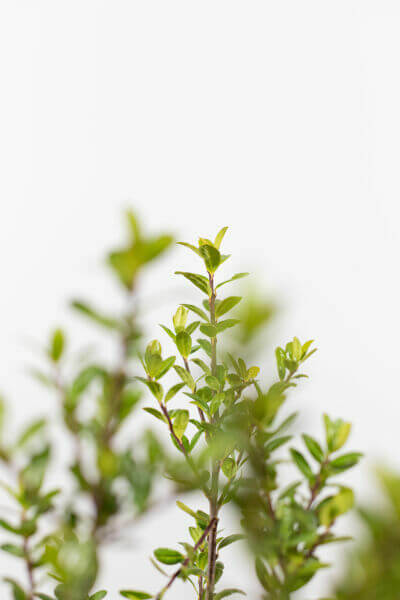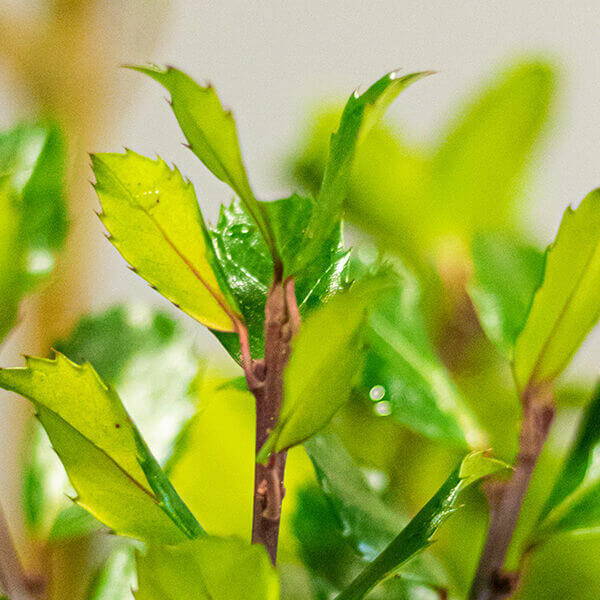Best Hedging Plants For Shape And Form
Best Hedging Plants For Shape And Form
Blog Article
Hedging Plants For Wildlife Friendly Gardens
Improve your garden's appeal with lush hedge ranges such as Yew (Taxus), Thuja, Laurel, Photinia, and Bamboo, celebrated for their structural stability and environmental benefits.
Yew and Thuja offer evergreen coverage and winter strength, while Laurel provides quick growth and broad, aromatic leaves.
Photinia includes seasonal charm with its dynamic red foliage, and Bamboo provides a low-maintenance, serene atmosphere.
These hedges enhance air quality, decrease sound, and develop tranquil, private spaces.
Appropriate planting, spacing, and upkeep ensure energetic development and ecological harmony.
Check out how these lavish varieties can elevate your garden's charm and wellness.
Secret Takeaways
Change Your Garden With Lush Hedge Ranges
- Select Yew for its dense, evergreen growth and exceptional durability.
- Opt for Laurel for its fast growth and broad leaves, guaranteeing fast personal privacy.
- Pick Photinia for its lively seasonal foliage, which turns a striking dark red.
- Utilize Bamboo for a low-maintenance, winter-hardy hedge with aesthetic appeal.
- Space plants 2-3 per meter and prune routinely for ideal growth and health.
Popular Hedge Plants
When changing a garden with rich hedge varieties, it's necessary to think about popular hedge plants such as Yew, Thuja, Laurel, and Photinia due to their special attributes and advantages.
Yew (Taxus) is extremely esteemed for its longevity and dense, green growth, making it a prime choice for withstanding landscapes.
Thuja is kept in mind for its evergreen foliage and robust winter season strength.
Photinia includes seasonal vibrancy with red leaves that darken gradually, developing vibrant visual appeal.
Laurel uses quick development and aromatic, broad leaves, suitable for fast privacy.
Furthermore, Bamboo is an outstanding choice for atmosphere, using a low-maintenance, winter-hardy alternative that boosts the garden's visual with its classy, swaying walking canes.
These choices accommodate a variety of horticultural requirements and choices.
Benefits of Garden Hedges
Garden hedges offer a multitude of advantages, making them an important addition to any landscape. These natural barriers are affordable to implement and provide substantial wind security, enhancing air blood circulation and adding to noise decrease. The dense foliage of hedges like Thuja and Beech ensures personal privacy by obstructing presence, producing a secluded and serene environment.
Hedges likewise play an essential function in microclimate policy, supplying a stable environment that cultivates plant development and minimizes temperature level fluctuations. Their detailed leaf structures filter contaminants, enhancing air quality and contributing to a much healthier garden ecosystem.
Additionally, hedges excel in sound reduction, taking in and deflecting acoustic waves to lower ambient noise levels. This double functionality of offering both visual and acoustic privacy boosts the overall harmony and aesthetic appeal of any garden.
Planting and Upkeep Tips
For a successful hedge, precise preparation of the planting area is vital. Guarantee the soil has proper pH and drainage to support strong root advancement.
Space the plants appropriately for the selected types. Water the hedge frequently during its initial growth stage, adjusting as required with seasonal modifications.
Execute a organized pest control and disease avoidance technique, utilizing chemical or organic treatments when required. Frequently check for aphids, mites, and fungal infections.
Apply mulch to keep moisture and reduce weeds. Seasonal pruning promotes thick development and air circulation, important for plant health.
Following these guidelines will help you cultivate a dynamic, well-maintained hedge that enhances the beauty of your garden.
Spacing and Trimming Guidelines
Spacing and Trimming Guidelines
Appropriate spacing and trimming are crucial for cultivating healthy, aesthetically appealing hedges. Appropriate spacing makes sure each plant gets enough nutrients, light, and airflow.
Follow these standards for optimum hedge upkeep:
- Spacing: Position hedge plants 2-3 plants per meter to encourage robust development.
- Pruning Strategies: Routine pruning is essential for preserving wanted hedge height and shape. Cut brand-new growth in summertime and cut back older wood during winter.
- Seasonal Care: Change cutting schedules and approaches according to seasonal requirements to make sure plant health.
- Hedge Height: Routinely monitor and cut to preserve the wanted hedge height and attain consistent looks.
Following these steps will guarantee your hedge grows, improving both the appeal and performance of your garden.
Picking the Right Hedge
Selecting the Right Hedge
Selecting the proper hedge includes evaluating factors such as fully grown height, foliage density, and environmental resilience. Effective hedge plant selection requires comprehending each species' development qualities and site-specific adaptability.
For instance, Yew (Taxus) provides outstanding longevity and thick development, while Thuja is notable for its winter season resilience. In addition, thinking about maintenance requirements is crucial; fast-growing species like Laurel or Privet need regular trimming, whereas low-maintenance alternatives like Bamboo or Ivy might be more effective for those seeking very little upkeep.
Ecological elements such as soil type, light availability, and wetness conditions ought to likewise assist the selection procedure. This careful method makes sure the selected hedges will grow, providing both visual and functional benefits to the garden landscape.
Shipment and Planting Advice
To ensure your hedge plants prosper, they should be delivered by specialized carriers and planted promptly upon arrival.
Follow these important actions for successful planting:
- Soil Preparation: Improve the soil with raw material to improve drain and nutrient material.
- Planting Depth: Develop a trench twice the width and equal to the depth of the root ball.
- Watering Methods: Water completely after planting, keeping the soil regularly moist but not saturated.
- Mulching: Use a layer of mulch to maintain wetness and reduce weeds.
Customer Support and Service
Provided the important function of prompt help in horticultural pursuits, our customer support team is available six days a week through telephone, email, and social media to provide professional suggestions and promptly resolve any issues. Their dedication to quick response times ensures customer complete satisfaction by fixing inquiries connected to plant health, ideal planting techniques, and upkeep schedules.

Availability
Within 24 hours
This detailed support group, enhanced by a stellar 9.3/ 10 client ranking, highlights our dedication to boosting the gardening experience for every client.
Regularly Asked Questions
The Length Of Time Does It Consider Hedge Plants to Establish?
Hedge plants normally need one to three years to end up being totally developed, with the exact duration differing by types and growing conditions.
Efficient care throughout this important duration is necessary for robust development. Consistent watering, vigilant weed control, and appropriate fertilizer application are pivotal in promoting strong root advancement.
For instance, fast-growing types like Laurel might establish faster, while slower-growing varieties such as Yew might take longer. Diligent maintenance accelerates the establishment procedure, leading to thick and healthy hedges.
What Are the Best Hedge Plants for Privacy?
The concern of the finest hedge plants for privacy involves examining evergreen and deciduous choices.
Evergreen hedges like Thuja, Laurel, and Cypress offer year-round coverage, ensuring constant privacy.
In contrast, deciduous hedges such as Beech use seasonal personal privacy, shedding leaves in chillier months.
Key upkeep ideas for privacy hedges include routine trimming, fertilizing in spring, and proper spacing-- normally 2 to 3 plants per meter.
Furthermore, consistent watering and thorough weed removal are crucial for promoting healthy, thick growth.
Can Hedge Plants Bring In Wildlife to My Garden?
Yes, hedge plants can attract wildlife to your garden by supplying vital benefits like shelter, food, and nesting websites, thereby boosting local biodiversity. For example, yew, holly, and laurel are outstanding for attracting birds, while ivy supports a range of insects.
Nevertheless, it is very important to keep in mind that there are some drawbacks, such as increased upkeep to manage insects and routine upkeep. Thoroughly selecting and preserving hedge ranges can help balance these disadvantages and advantages, ultimately promoting a vibrant and sustainable environment in your garden.
Are There Any Flowering Hedge Plants Available?
Yes, there are flowering hedge plants readily available that can boost the appeal of your garden.
For example, Elaeagnus, also called Olive Willow, produces fragrant white flowers in the fall, adding a touch of sophistication.
Photinia, another popular option, showcases vibrant red leaves that develop into an abundant green, developing a dynamic visual effect throughout the seasons.
To guarantee these plants grow, it's important to practice appropriate pruning methods and seasonal upkeep, such as cutting new growth in the summertime and cutting down in the winter season.
These procedures will assist keep the health and aesthetic appeal of your flowering hedges.
How Do I Prevent Insects in My Hedge Plants?
To prevent insects in hedge plants, utilize natural insect control techniques and keep correct hedge care. Present helpful pests like ladybugs, which prey on harmful pests, to create a balanced ecosystem.
Frequently check your hedges for indications of problem and promptly remove any affected parts to avoid the spread. Make sure the health of your hedges by using well balanced fertilizers and offering sufficient water.
Utilize mulching to retain soil wetness and correct spacing to minimize plant tension and promote robust growth. These practices collectively assist in decreasing bug problems and preserving a healthy hedge.
Conclusion
In essence, choosing the ideal hedge ranges such as Yew, Thuja, and Laurel can transform any Browse around this site garden into a peaceful sanctuary. These plants supply year-round greenery, enhance visual appeal, and offer practical benefits like noise decrease and wind security.
Correct planting methods, accurate spacing, constant watering, and seasonal cutting are important for optimal development.
Trustworthy delivery services and expert consumer support make sure a seamless experience from purchase to planting, making it easier than ever to raise your outdoor area.
Garden hedges offer a plethora of benefits, making them an important addition to any landscape. These natural barriers are economical to implement and supply significant wind defense, enhancing air blood circulation and contributing to noise decrease. The dense foliage of hedges like Thuja and Beech makes sure privacy by blocking presence, producing a remote and serene environment.

Pruning Methods: Regular pruning is necessary for preserving preferred hedge height and shape. Trim new development in summertime and cut back older wood during winter season.
Report this page